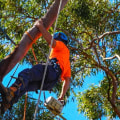How to make a tree healthy again Plant the right tree in the right place. Choose a tree designed for your area, then find a spot that gets enough sun and provides enough space for its fully grown crown. Prevent power tools, such as lawn mowers and string trimmers, from hitting the tree and damaging its bark. A circle of mulch around the tree is a good way to create a buffer zone.
It is important to avoid damaging vital water vessels and growing vulnerable tissue that lies just below the cortex. A wide, even layer of mulch around the trunk is one of the best things you can do for a tree. It will insulate the soil around the roots of the tree, keep power tools away, discourage foot traffic, and improve the soil as it breaks down. Use mulch made from wood chips or shredded wood.
Spread it three to four inches deep around the tree; the wider the area covered with mulch, the better. Spread the mulch in an even layer without piling it against the bark. That can lead to rot and disease. When soil is piled up around the roots of a tree, the tree cannot absorb the water and air it needs.
To avoid compacting the soil, discourage foot traffic in the area under the branches of a tree. Keep out the roads and play equipment. Do not park cars or stack heavy loads on roots. Pruning can best be used to encourage trees to develop a strong structure and reduce the likelihood of damage during bad weather.
Pruning for shape can be especially important in open trees that self-prune very little. All woody plants lose branches in response to shading and competition. Branches that are poorly attached can break from wind and the accumulation of snow and ice. Branches removed by such natural forces often result in large, torn wounds that are rarely sealed.
Pruning as a cultural practice can be used to supplement or replace these natural processes and increase the strength and longevity of plants.






